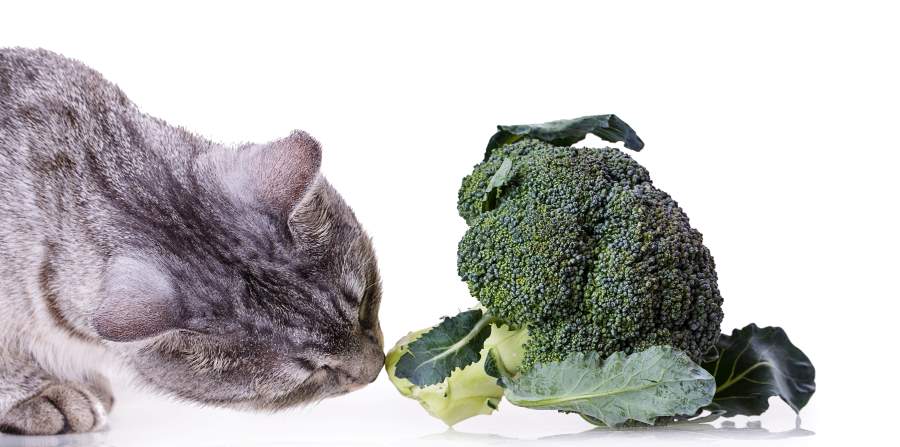Feline weight-loss study has unexpected results involving (yuck!) vegetables

According to the Association for Pet Obesity Prevention, 60% of cats in the US are overweight or obese. A couple of researchers at Virginia Tech hoped to do something about that.
And while their findings weren’t what they expected, their year-long study did provide some unintended results that provide hope to pet owners wrestling with the difficult task of helping their overweight cats slim down.
Megan Shepherd, DVM, PhD, DACVN, an assistant professor of clinical nutrition at the Virginia–Maryland College of Veterinary Medicine at Virginia Tech, conducted the study in collaboration with Lauren Dodd, DVM, a clinical nutrition resident at the school.
“Our hypothesis was that feeding [cats] using a food toy [as opposed to a bowl] would result in higher owner-perceived quality of life of their cat during a weight-loss plan,” Shepherd told NEWStat. “We know that food toys provide environmental enrichment and slow [the] rate of food consumption.”
But no one had done a clinical study to see if food toys could actually help cats lose weight when used in conjunction with a prescribed weight-loss plan.
Shepherd and Dodd decided to give it a shot.
They enrolled 44 overweight cats in their study (which was sponsored by Purina) and randomly assigned them to two groups: one with and one without a standard ball-type food toy. In addition, some of the cats wore activity monitors to record changes in their activity levels. Each cat was given a customized weight-loss plan, which included nutritious low-calorie food and treats. Owners recorded their perceptions of their cat’s quality of life in a monthly questionnaire.
But the study’s findings didn’t support the original hypothesis: “We were unable to [definitively] detect a benefit of the food toy on the owner-perceived quality of life of their cat,” Shepherd said.
She has her theories as to why. Among them: “There was individual variation in the implementation of the food toys.” In other words, some of the owners were sneaking snacks to their cats—which skewed the data.
Yet Shepherd remains upbeat about the results.
She said that owner-perceived quality of life for the cats improved in some areas as the cats lost weight—areas involving mobility, play, and grooming. Because weight gain is usually gradual, many of the owners hadn’t realized just how much the added pounds had affected their cat’s quality of life.
But the biggest surprise was the vegetables.
Specifically, the successful use of vegetables to reduce and/or manage disruptive food-seeking behavior in cats on a prescribed weight-loss plan.
“This was an unexpected finding, as we did not intend to implement vegetables in the study,” Shepherd said. But when cat owners reported disruptive food-seeking behavior on the part of hungry cats—which included waking owners up early, destructive acts, excessive vocalization, and eating human food they’d never eaten before (one cat scarfed down a whole loaf of gluten-free bread)—Shepherd and Dodd realized they need to manage the food-seeking behavior in a way that didn’t wreak havoc with the prescribed calorie restriction. In short, they needed food to provide bulk without adding significant calories.
“We turned to vegetables in desperation,” Shepherd said.
Shepherd does note that 28 of the 32 cats who were fed vegetables wouldn’t touch them until a flavor enhancer was mixed in.
The big takeaway, Shepherd told NEWStat, is that “Owner-perceived quality of their cat’s life improved as their cats lost weight.” And adding in vegetable fillers can help cats stay on track.
Perhaps more importantly, “Vegetables can help prevent diet sabotage.” Shepherd recommends a ¼ cup of zucchini, cauliflower, lettuce, and green beans daily. “Albeit,” she added again, “most cats need a flavor enhancer.”
And carrot cake doesn’t count.
Photo credit: © iStock/Dmytro_Skorobogatov



